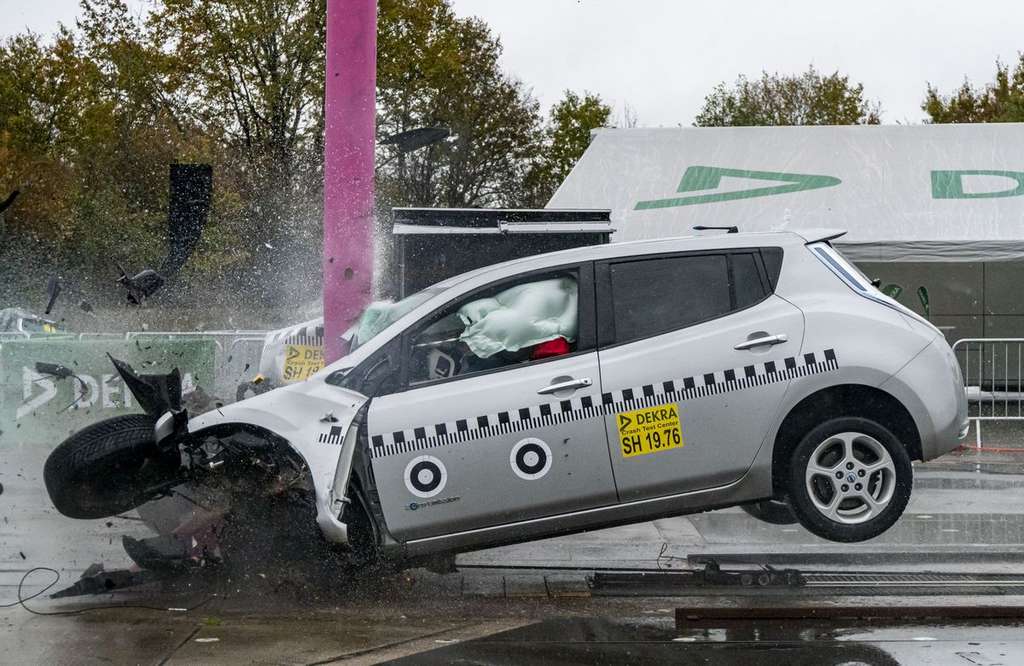A study conducted by the firm Dekra on several crash tests of electric cars shows that they are no more dangerous than thermal cars in case of violent shock.
This information should reassure those who are wondering about the risks that electric cars incur in the event of a violent shock. Indeed, we know that a battered lithium-ion battery can catch fire or even explode. In order to test the reliability of the safety systems and the design of the batteries, the German firm Dekra, specialized in the inspection of vehicles, has subjected an extreme crash test to two of the most popular electric car models of the moment. : the Renault Zoe and the Nissan Leaf (version produced between 2010 and 2017). And the record is clear: ” In terms of safety, electric vehicles they [experts, note] tested are as safe as conventional powered vehicles. “
Dekra simulated four types of accidents: a side collision with a pole at 60 km / h for the Renault Zoe, two collisions at 60 and 75 km / h for the Nissan Leaf and a frontal collision at 84 km / h for the Leaf. It was to simulate a shock with a tree. The crashes were made at speeds higher than those usually used in standard tests, says Dekra.
Three key observations were made: a reliable shutdown of high voltage installations in the event of an accident, damage comparable to that of conventional propulsion vehicles, and no fire despite a strongly deformed battery. It should be noted that the two models that were used for the test obtained the maximum five- star rating for the Euro NCAP crash test.

Dekra has also tested rescue procedures
With this extreme crash test, Dekra also wanted to help improve rescue procedures by evaluating the most effective methods and tools to deploy to free the occupants of a damaged vehicle. The technicians were able to test a water lance system inserted directly into the battery compartment to extinguish a fire more easily. ” This method seems to offer potential, but additional research is needed to establish its real effectiveness,” says Dekra.
Although the experts who conducted this experiment recall that the chances of survival in case of side impact with a tree ” would be very thin at this kind of speed “, they believe that ” this applies to all cars, whatever their propulsion system. The major manufacturers of standard electric vehicles have achieved at least the same level of safety as cars with a combustion engine. “